Most solid cargoes carried across the oceans are handled by either containers or bulk carriers, but some cargoes have requirements that can't be satisfied by either kind of ship. Much like unusual liquid cargoes, these are transported by specialized ships, designed for the purpose.
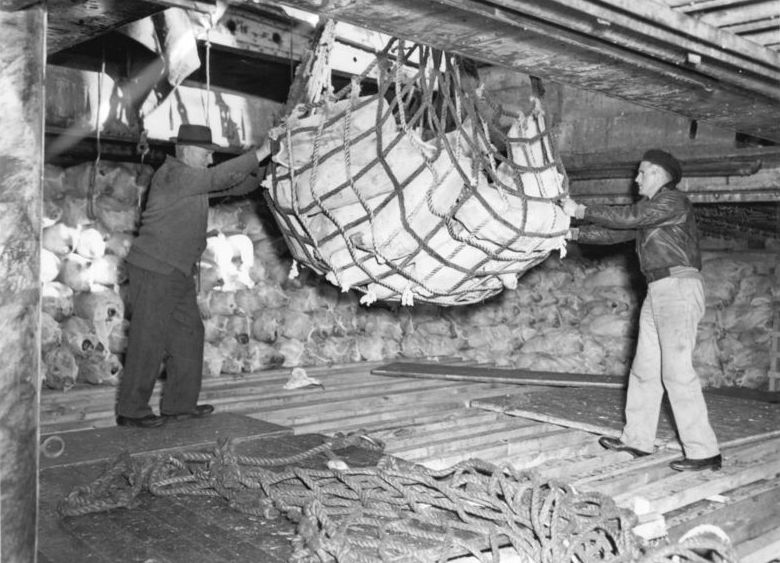
Loading frozen meat aboard reefer Clan McDougall
In the second half of the 19th century, the British faced a problem. The rapidly-growing population had made it increasingly difficult to produce enough food in the British isles. Grain imports could make up for some of this, but other products, most notably meat, required a great deal of land and couldn't be practically shipped in from overseas, where Argentina and Australia produced great surpluses. Mechanical refrigeration could change that, but while work on freezing carcasses began as early as 1861, it would be twenty years before a refrigeration plant was created that could be fitted to a ship and used to reliably and economically carry meat halfway around the world.
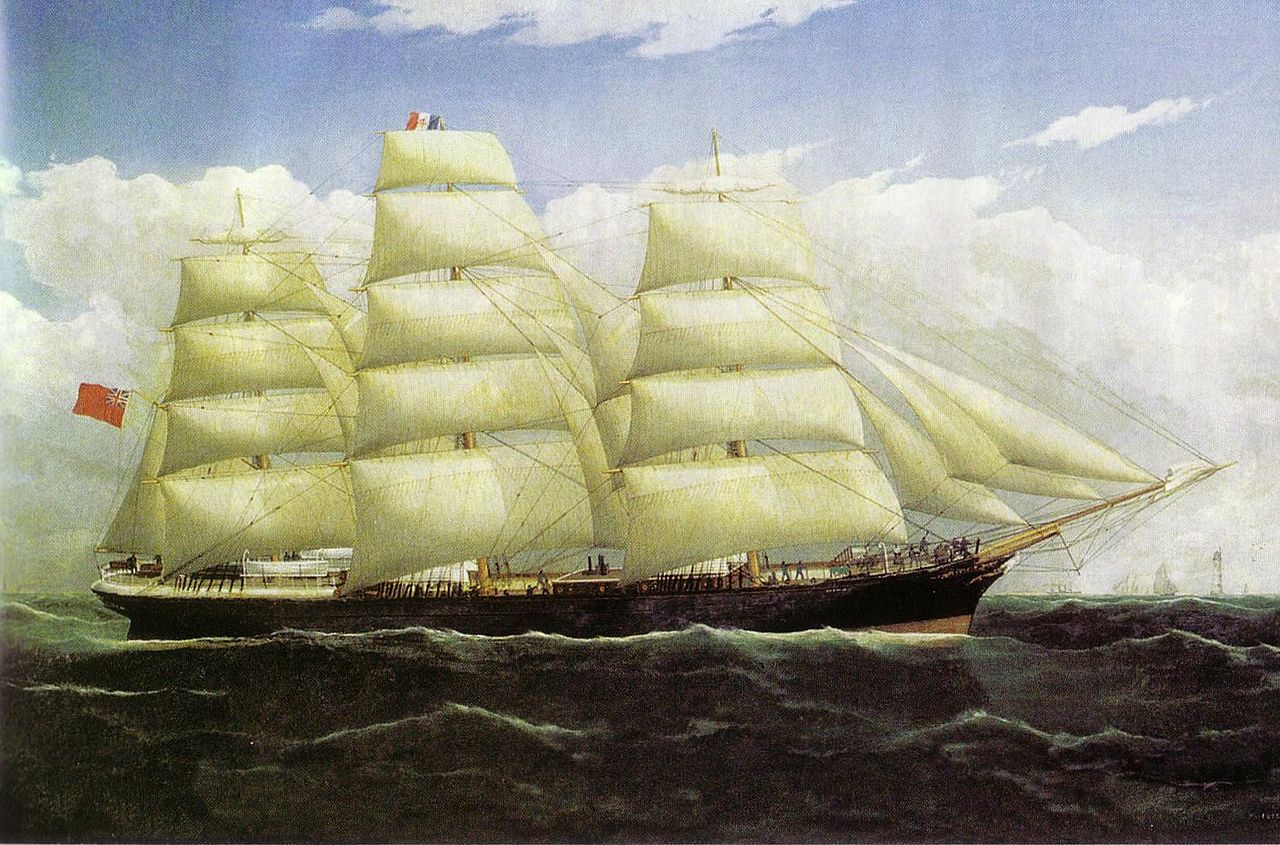
Dunedin
Reefers, as the refrigerated ships became known, were usually designed for high speed, limiting deterioration of the cargo and reducing the chances for things to go wrong. But not all of the ships fitted with insulated cargo holds and cooling plants were of this type. A few early reefers, most notably Dunedin, were sailing clippers. By WWI, a typical voyage from Australia or New Zealand was 30-40 days, requiring the meat to be frozen, but shorter runs, from the Americas, allowed the beef to be kept chilled instead, improving quality. Eventually, new techniques allowed Australian beef to be handled in the same manner.
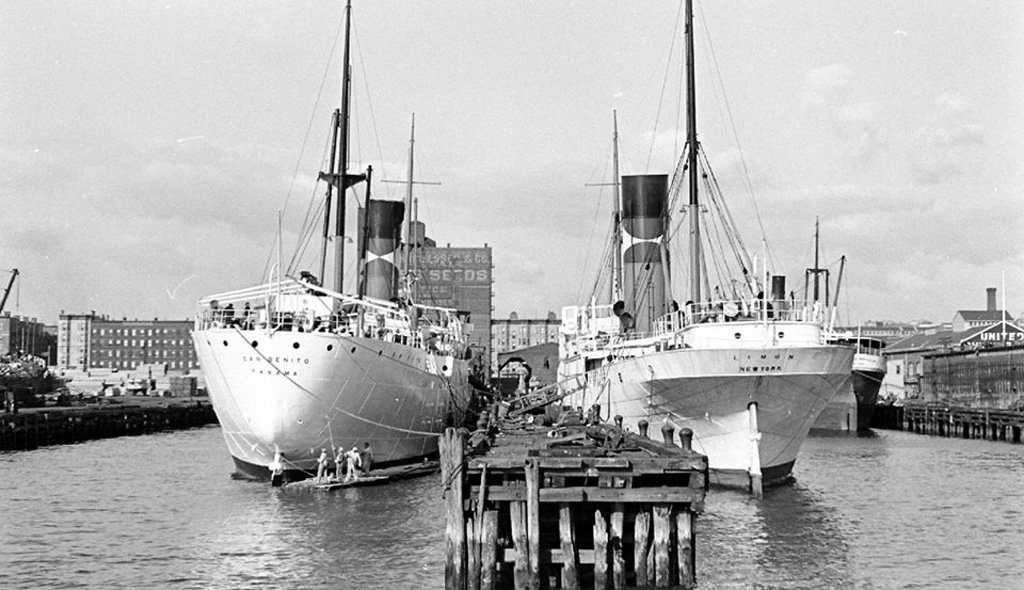
San Benito and Limon of United Fruit's Great White Fleet
Nor was meat the only product to benefit from refrigeration. Starting around 1890, tropical fruits began to see significant maritime trade, first bananas, nearly unknown in Europe before then. This trade was dominated by the United Fruit Company, whose "Great White Fleet"1 of fast reefers carried small numbers of passengers as well as fruit. These ships were set up very differently from meat carriers, with holds designed to ensure adequate ventilation, and most reefers were focused entirely on a single cargo on a specific route.
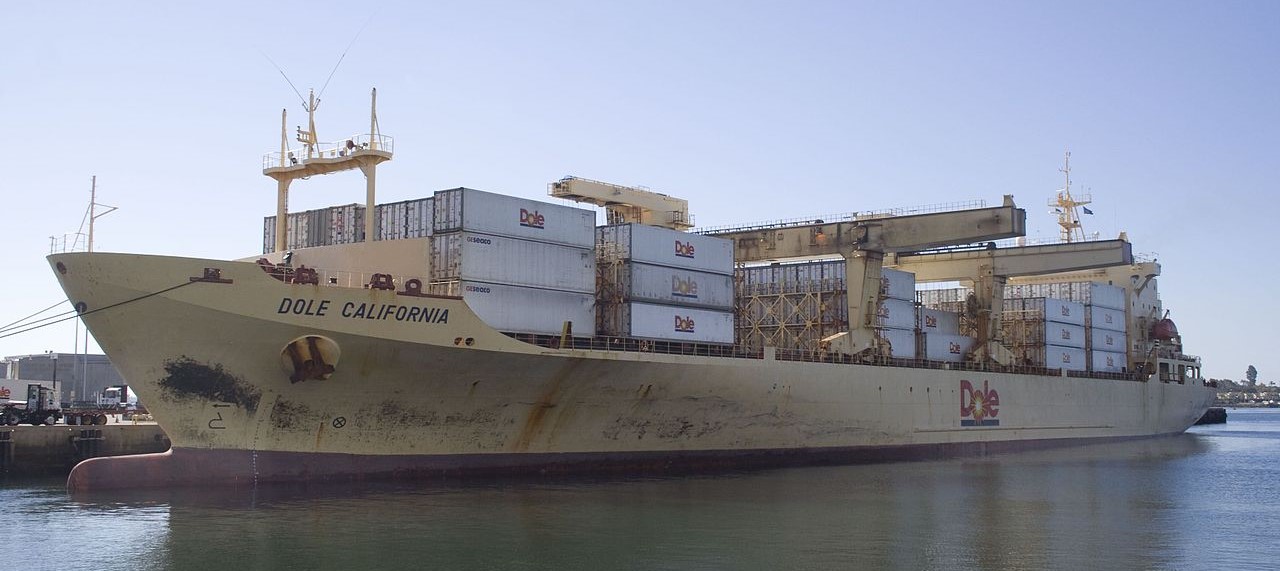
Dole California, a containerized reefer ship
The decades after WWII saw several major changes in the reefer fleet. One was the multi-temperature ship, which could handle multiple different type of cargo, greatly increasing flexibility for shipowners. Pallets were also introduced, reducing times required to load and unload ships. But these improved reefers faced competition from containerization. Only a few years after the shipping container entered use, reefer containers began to be built, usually powered by electricity from the host ship. These offered all of the handling and cost benefits of containers, and most container ships were built to accommodate some number of these containers. A few ships use a different cooling system, with centrally-supplied air. Despite this, the dedicated reefer has survived, and international trade in cooled goods remains robust.
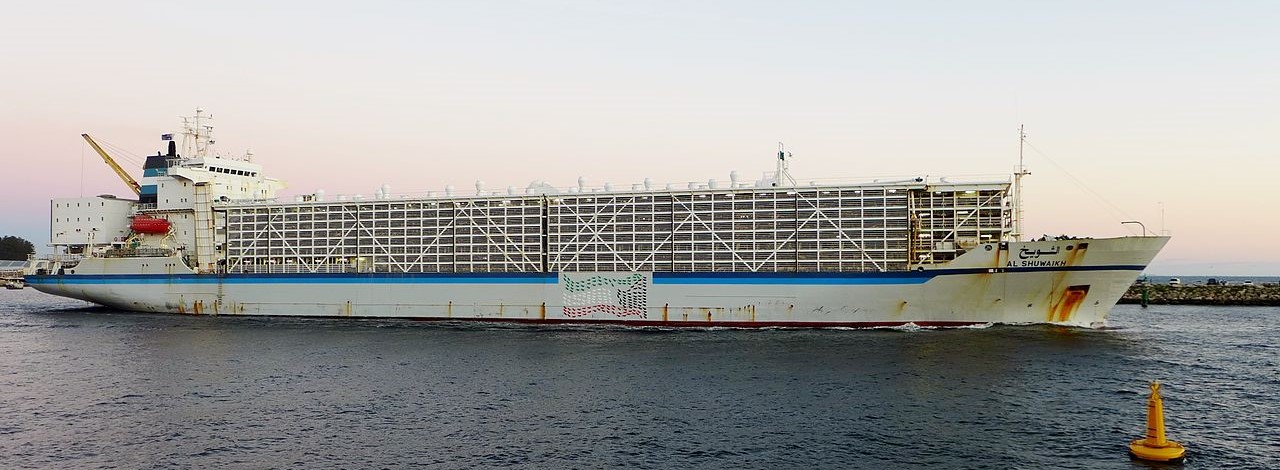
Livestock carrier Al Shuwaikh leaves Freemantle
There is also a trade in live animals, which require their own specialized ships. Before refrigeration, this was the only way to transport meat across oceans, but it was not particularly efficient, and mortality rates were high. There was also extensive trade in horses, usually in support of military operations. The largest customers were Indian rulers, whose territory was ill-suited to raising horses, and who bought thousands every year to make up for losses. Trade in live animals began to revive after WWII, when the "seagoing cowboys" shipped hundreds of thousands of farm animals to war-ravaged countries to help reestablish agricultural herds. They used converted war-surplus cargo ships, but as long-term markets for livestock developed, particularly in the Middle East to satisfy Muslim religious requirements,2 specialized ships were built or converted. These have special systems to make sure the animals are kept fed and watered, and their waste is disposed of.
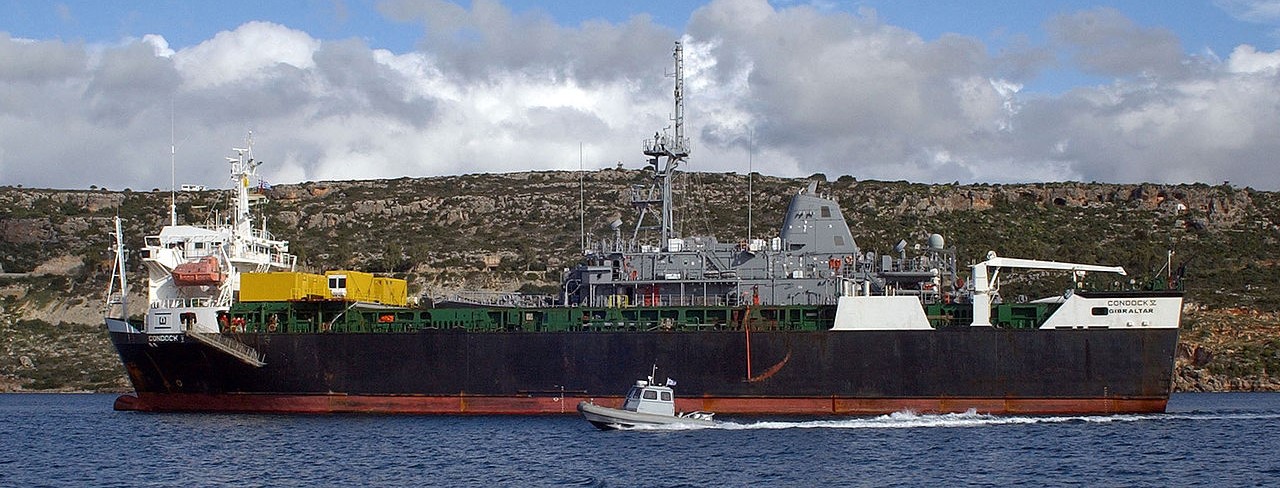
Mine countermeasures ship Gladiator aboard dockship Condock V
One of the most prominent types of specialized cargo ship is the heavy-lift vessel. While ships fitted with heavy booms or cranes for cargoes like locomotives, larger boats and bridge sections date back to the early part of the 20th century, there were several major developments in the last quarter of the century. First were dockships, essentially civilian versions of the Landing Ship Dock which could ballast down to float large cargoes in or out. Most also had heavy gantry cranes and a roll on-roll off capability, allowing them to handle cargoes of 500 tons or more.
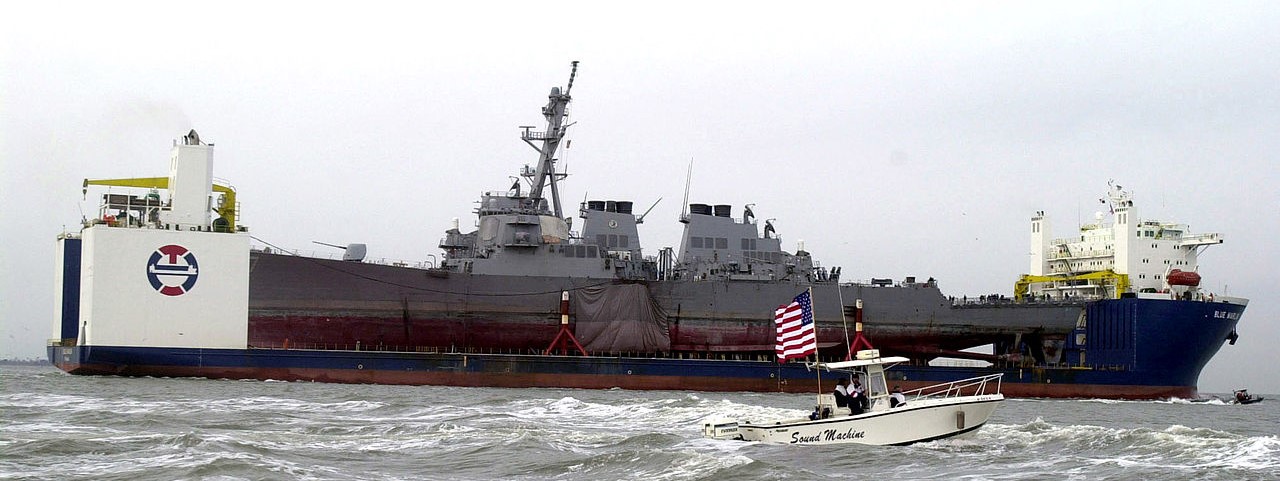
USS Cole is brought home aboard heavy lift ship Blue Marlin
But the most prominent of these types were the semi-submersible heavy lift ships. These had a broad, open deck with minimal superstructure, and were fitted to ballast down so that heavy cargo could be floated onboard. They were intended primarily to replace towing of heavy offshore equipment like drilling rigs, allowing greater speed and safety. But they have found other uses, most dramatically carrying damaged warships home for repairs. There are only a handful of these vessels, but they play an important part in the global maritime industry.
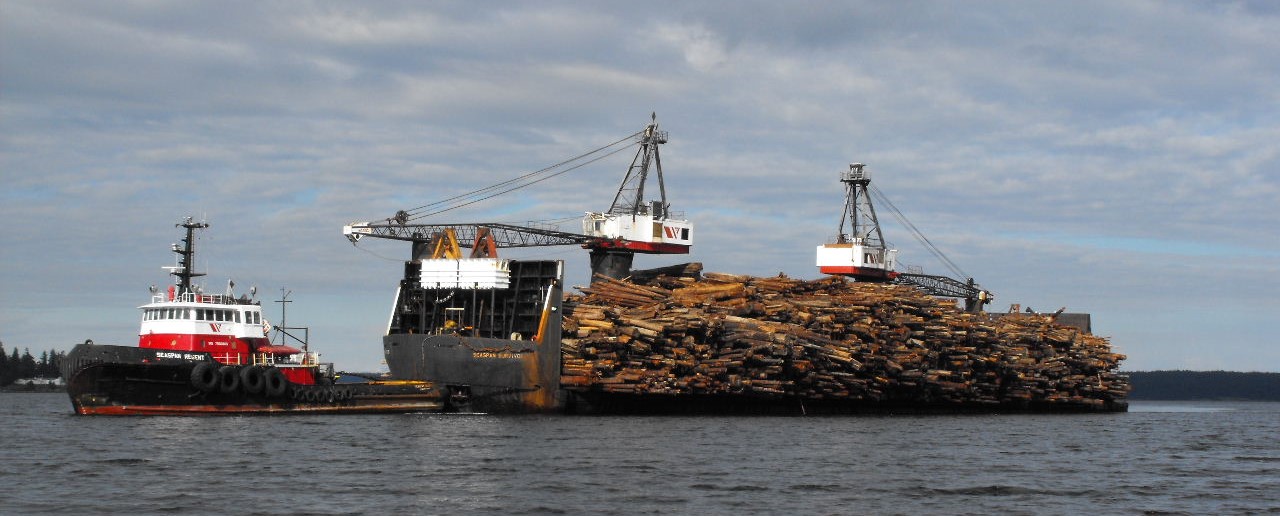
A semi-submersible log carrier barge
Some semi-submersible vessels are used for other purposes, most notably a handful of log carriers operating in British Columbia. These ships have a broad, low cargo deck in the middle, loaded high with logs by onboard cranes in the bays and rivers along the coast. When they arrive at the mills, they are ballasted down and tipped, so that the logs slide off. Nor are they the only vessels in the forest product trade. These products, not just logs but also wood chips and lumber, can be loaded in bulk carriers or containers, but their low density means that they don't fit particularly well with ships designed for high-density cargoes like ore and coal. As a result, specialized ships are used, with larger cargo holds and cranes to speed loading and unloading. Even more specialized are the newsprint carriers, a small fleet operating primarily around Europe that are equipped with dehumidifiers and heaters to ensure the quality of their cargo.
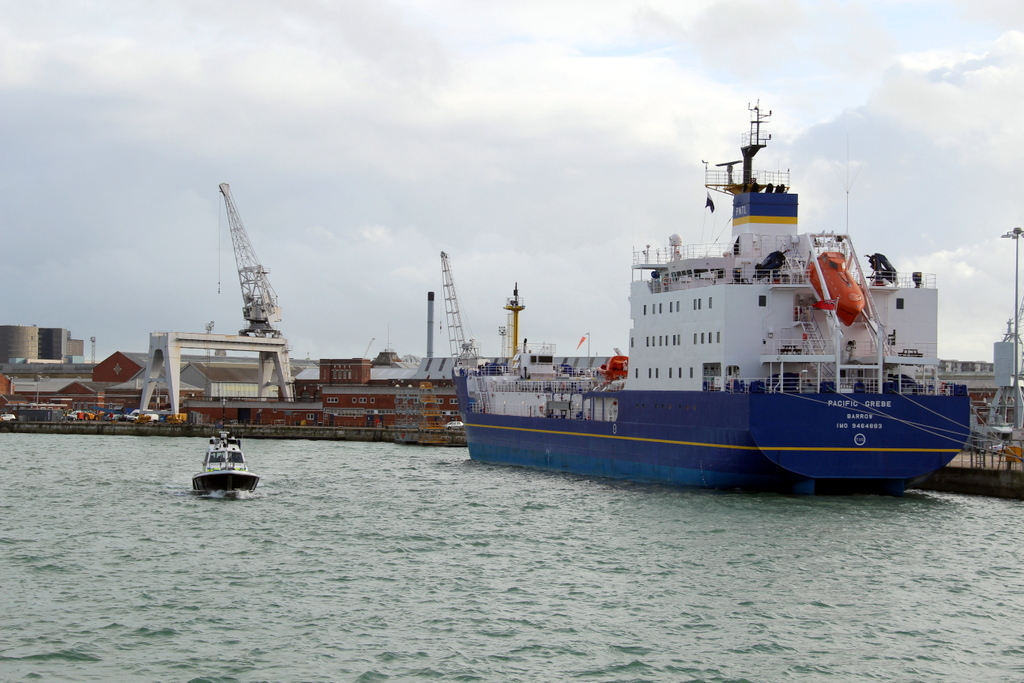
Nuclear fuel carrier Pacific Grebe
Many nuclear plants are located on the coast, and a small fleet of vessels exists solely to service them, transporting nuclear fuel in and nuclear waste out. These ships tend to be ro-ros, built to the highest standards and with extensive shielding for the cargo. A trio of nuclear fuel/waste carriers, operated under the British flag, are the only armed merchant vessels I am aware of currently in service. Until the last few decades, the seas were seen as a good place for disposal of hazardous waste, and a number of vessels were built specially for this task. Many had clamshell doors in the bottom to make disposal easier, but stricter environmental regulations have seen this category of merchant ship disappear.
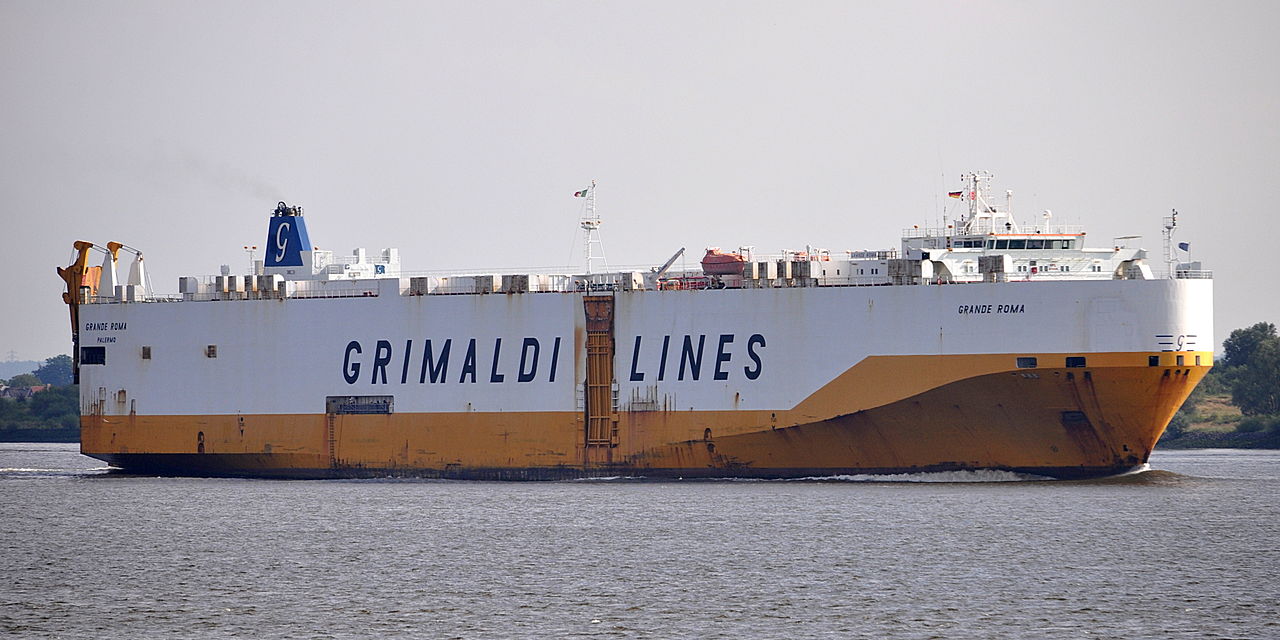
Car carrier Grande Roma
A much larger fleet are the car carriers. Cars are a low-density cargo,3 and most ships would have insufficient volume to carry them economically. The resulting vessels are extremely boxy, with intricate mazes of decks and ramps to allow cars and trucks to be driven off quickly and efficiently. In recent years, car carriers have branched out somewhat into medium-heavy cargo up to ~150 tons, with ships being fitted with suspended decks that can be lifted to increase the available height for things like locomotives and heavy turbines, or just to accommodate heavy trucks in place of cars. The largest vessels can transport over 8,000 cars at a time, which are delivered to the piers over side ramps.
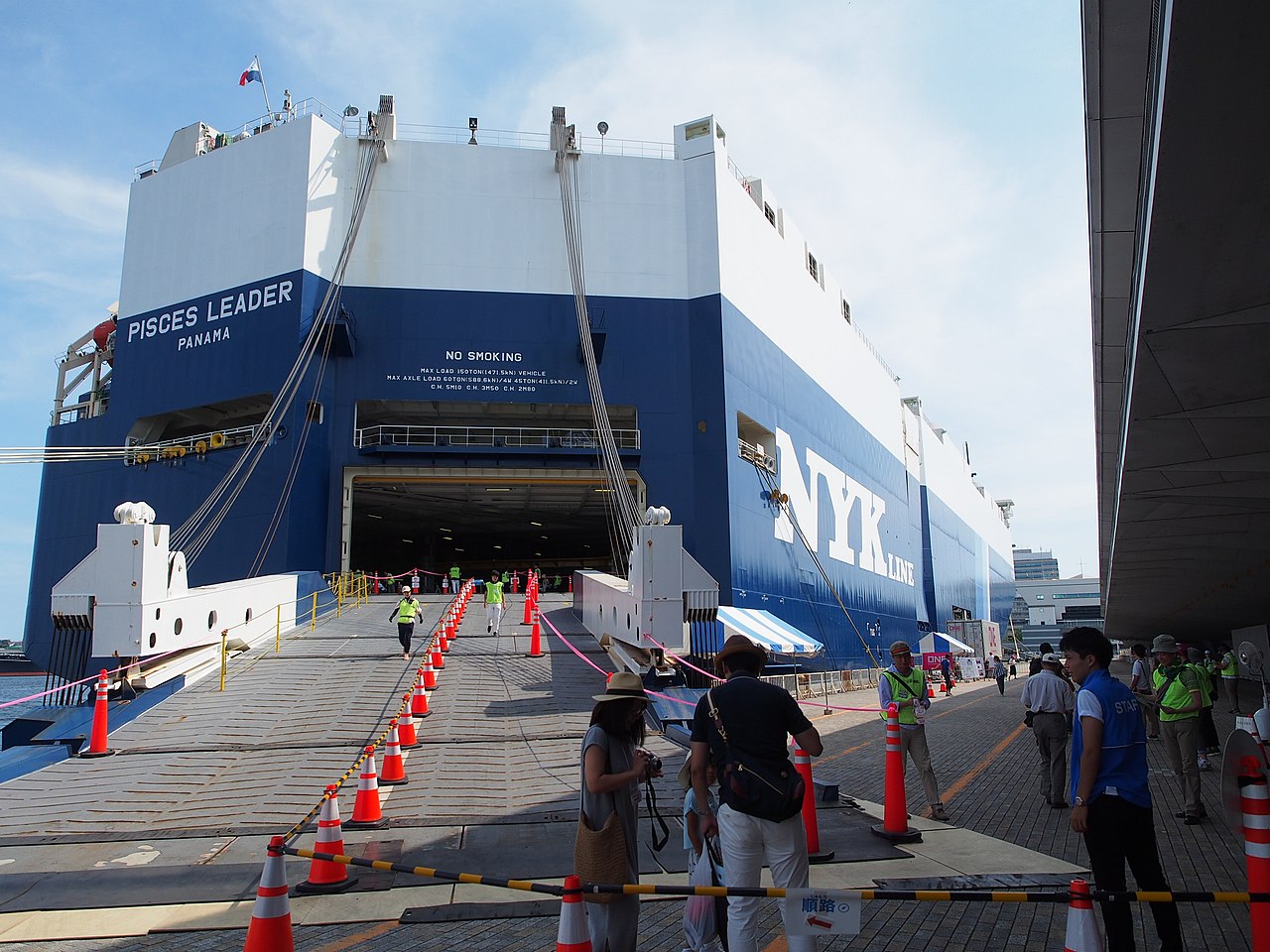
Car carrier Pisces Leader with her ramp down
Transporting cargo across the sea is the main purpose of merchant shipping, resulting in an enormous diversity of vessels, from the extremely obvious, such as passenger and container ships, to the obscure, such as the orange juice tankers and log carriers. But not every non-military vessel is merely concerned with transporting cargo, and we'll begin to look at the world of service vessels next time.
1 Not to be confused with the other Great White Fleet. ⇑
2 I'm not familiar with halal, but it seems like it would be cheaper to build a processing plant at the origin (most often Australia) and ship in reefers. Maybe there's some reason this doesn't work, and I'd love to know if anyone has more insight into this. ⇑
3 I believe this is what separates car carriers from ro-ro cargo ships, which are designed to carry cargo in truck trailers. While they are capable of carrying cars, they are not designed to do so. ⇑

Comments
I'm told you can smell a sheep carrier en route to the mideast from many miles away...
On the halal live vs frozen meat, it looks to me that it's fundamentally a trust question. When I skimmed through this publication from the WTO, I find phrases like "Confusion over differences in standards • No viable accreditation scheme to regulate halal certification bodies (HCBs) • Conflicts of interest among HCBs • Evident fraud and rumours undermine market integrity • Fake halal logos on non-halal products"
http://www.intracen.org/uploadedFiles/intracenorg/Content/Publications/HalalGoesGlobal-web(1).pdf
If you import a live animal, you don't have to trust, you have control yourself.
...Several WICKES/CLEMSON class DDs - the classic 'Four Stackers' ended their days as banana boats - the last one survived into the 50s - as did two even earlier DDs, TRUXTON (DD-14) and WHIPPLE (DD-15). It seems a little counterintuitive for such specialized hulls to be converted into merchantmen, but even with their turbines replaced with far more economical diesels they were fast ships that did well hauling time-sensitive cargo from Central America to Gulf ports, and their shallow draft meant they could go just about anywhere. Good article with more detail from USNI at https://www.usni.org/magazines/proceedings/1971/april/banana-boats-and-blockade-runners
@David W
I can definitely see that being a problem for general halal trade, but there are ways around it. What's to stop some Kuwaiti shipping firm/meat importer from setting up a plant in Australia and getting it certified by Kuwait's body? There's no real problem of trust, because the entire chain is under their care (unless there are custody/handling requirements for halal I don't know about.) When dndnrsn reviewed this yesterday, he suggested it might be a matter of protectionism and lobbying by the local halal butchers, which makes more sense.
@Mike
Interesting. I didn't know that.
I'm not sure if this is part of it, but I know for certain festivals (primarily Eid) the traditional main meal is a goat which is slaughtered at home. I know this to be fairly common in northern Virginia, and there are goat suppliers for this purpose. Also in my local experience the halal butchers are intimately connected with the slaughterhouses which are as close as practical.
As complete speculation, perhaps due to climate there might be a stigma in the Mideast attached to anything but the freshest meat.
Was there really more money to be made shipping whole refrigerated meat from Australia, rather than turning the meat into something more easily shipped, like tinned meat or some of the hardier types of sausages, and shipping those as ordinary cargo? Odd.
@Chuck
Demand for fresh meat sounds plausible. I'd think ritual use could be satisfied by local stocks, but who knows.
@Johan
That's actually a good question. My guess is that preserved meat products just aren't fully substitutes for fresh/frozen meat, and you could get a higher enough price for the frozen stuff to make up the difference.
I've heard it speculated that the infamous terrible English food is due largely to the fact that England, as the first major nation to be mostly urbanized, did indeed swap out a lot of their food ingredients to ones that are more easily transported long distances in pre-refrigeration days.
So: dried meats and dried pulses (meat pies and mushy peas). Sausages and potatoes (bangers and mash) or fish caught in the sea, with potatoes (fish and chips), as well as lots of substituting cereals, root vegetables, and preserved foods for fresh ingredients.
Then, path dependence kicked in. Once everyone was used to the bland diet, there was no demand for better foods even once technology allowed it to be brought in quickly and safely. It took a fresh round of immigration to build enough demand to have good food in the market, which then allowed the rest of the population to see what they were missing.
These days it's generally considered that English food is at least decent. A long way from the early 20th C.
I visited the northern UK a few years ago. The food seemed ok. There was quite a bit of Italian influence and many Indian restaurants. I don't know whether the problem was never very big in the first place or it has just plain been fixed.
Northern Europe isn't exactly famous for its cuisine in general. French and Italian cooking are much more celebrated than Polish and Swedish cooking, for example.
Don't forget the effects of a decade of rationing on the british cuisine.
I suppose the other issue was the loss of herbs and spices, which could have been used to make tasty food from heavily preserved ingredients. (see also: the heavily spiced sausages of the continent) Things like garlic could have easily been grown and taken to the cities in the same way that onions were.
Part of the problem is that we generally don't think of the good parts of British cuisine as being "British". The older good parts of British cuisine are largely shared with American cuisine, so we Americans see things like roast beef, fried chicken, sandwiches, apple pie, fried eggs on toast, etc as just "food" or even as "American food".
The word "transporting" is doubled at the beginning of the last paragraph.
Fixed.
Car carriers are among the ugliest vessels I've ever seen.
Will "service vessels" include cable-layers and cable repair ships?
Of course. Actually, they might get split off and talked about with cables, which is another thing I've been meaning to write about.
I can actually contribute a little to the livestock thing. Most of what gets shipped out are cull ewes that really aren't worth butchering at Australian labor costs, but are favored in the middle east. Also, many of the places they're going to aren't equipped with facilities for frozen carcass storage and shipping.
I believe it's actually at the point where the Chinese and Indonesians are importing unshorn wethers and cull ewes and shearing them themselves before slaughter, because it's cheaper for them than having both of those things done in Australia.
I fairly regularly drive past the Port of Baltimore on I-95. South of the Ft McHenry tunnel, just a bit past the Cruise Port (which I still think of as new), there's usually a cable-layer docked. As of this writing Google Maps overhead shows two barges of some kind, but annoyingly the streetview car was paralleling a tractor trailer when it went by northbound, and when it went by southbound they were not in port, apparently and a couple of car carriers just beyond. Given the split sterns and that the dock building still carries SubCom markings, I suppose they're used for cable stuff as well.
(They used to be in Tyco livery, but now it looks like it's called SubCom)
Incidentally, Google Maps' 3D view is pretty nifty for ship-viewing. I just hopped over to the Iowa. Wow.